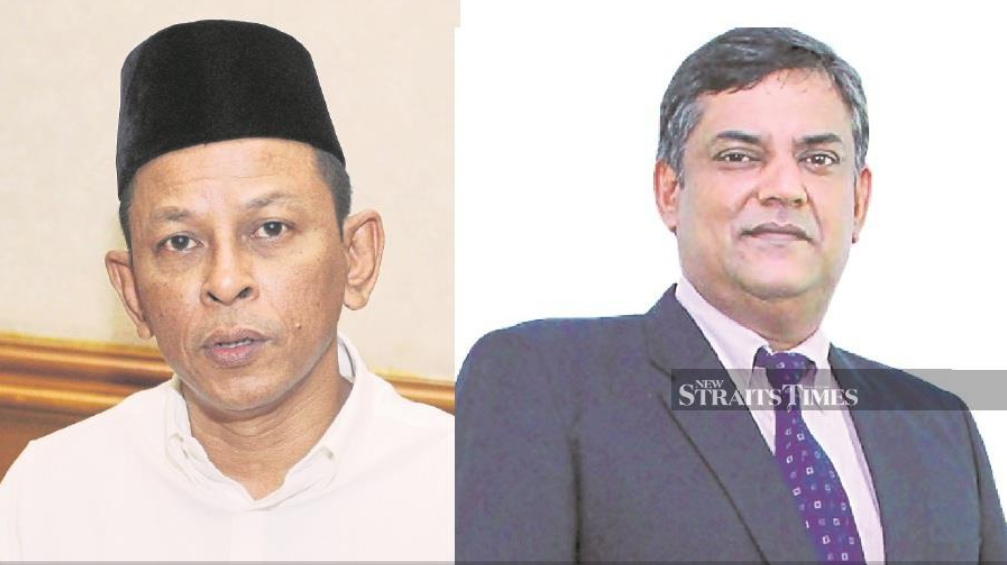War on drugs: 'Malaysia escape route for cartels'

KUALA LUMPUR: MALAYSIA is seen as an “escape route” by cartels, even though drug trafficking is a mandatory death sentence offence here, as enforcement efforts are not as “aggressive” as those in certain countries in the region.
Criminologist Kamal Affandi Hashim said “some neighbouring countries” had a different policy when it came to the war on drugs, with leaders giving police and other agencies the mandate to go all out to eradicate the menace from society.
“Hence, it is not worth the risk (for the cartels) and the best option would be not to produce drugs (in these neighbouring countries), but just to sell drugs instead.
“This may be the answer as to why our country is seen as an ‘escape route’ by cartels, syndicates or enterprising dealers,” he told the New Straits Times.
Though Kamal declined to name these countries, one such “neighbour” is thought to be the Philippines, where President Rodrigo Duterte, upon assuming office in 2016, was reported to have urged his countrymen to “neutralise all drug personalities”.
Estimates of these “drug personalities” killed in the war on drugs in the Philippines range from over 5,000 to 12,000 people.
Kamal, however, said the drug problem in Malaysia was “under control”, adding that large hauls by the authorities, such as the one on Sunday in Selangor, were meant mainly for distribution overseas.
A joint operation by federal police Narcotics Department and the Royal Malaysian Customs Department saw the seizure of 11 gunny sacks containing a white powder, believed to be ketamine, weighing 500kg, in Puncak Alam.
The team were led to a second location in Shah Alam where 3,230 packs of compressed cocaine weighing some 3.23 tonnes were seized.
The drugs were estimated to be worth some RM676 million.
Kamal said the drugs were likely not produced locally, with Malaysia being used as a transit point.
He said it was unlikely that the drugs were meant for the local market.
“To produce cocaine, a different method (as compared with other drugs) is required. It’s improbable in Malaysia. However, to extract it is a different story altogether.
“To extract cocaine from cloth, which had been soaked in a liquid form of the cocaine and then allowed to dry, would require a massive area in size. This can lead to traceability and information leaks, which is not in the best possible interest of the syndicate,” he said.
Kamal said, to address the issue, a security budget policy had to be considered and implemented by the government for enforcement activities, including the training of enforcement personnel and acquiring up-to-date technology, as well as for better pay packages for the enforcement personnel in lieu of risks they would face.
Another criminologist, Universiti Sains Malaysia Associate Professor Dr P. Sundramoorthy, concurred with Kamal that the drugs seized on Sunday were likely meant for distribution overseas.
This, he said, was because of the large seizure of cocaine.
“It is obviously for another part of the world, especially North America and Australia, where there are higher numbers of cocaine addicts.
“Data from the National Anti-Drug Agency and police Narcotics Department reveal the percentage of cocaine usage is insignificant in Malaysia,” he said.
Sundramoorthy said he believed the drugs were being smuggled into Malaysia using sea routes.
“Based on reported information, these drugs come into Malaysia via shipping containers. The reality is that in most nations, including those with advanced economies, X-ray machines are used to scan the containers’ contents for non-organic materials and contraband, such as weapons.
“Hence, drugs will not be detected. With the volume (of cargo) that go through major ports, including Port Klang, it is impossible to scan all containers arriving.
“They (Customs Department and port officials) have a profiling system based on the declaration of companies. They will only randomly select and check some containers. If the containers do not fit the profile, they will not be checked. That’s how syndicates manage to smuggle drugs in (to any country),” he said.
Sundramoorthy, however, said it was not due to any weakness in the Malaysian system, adding that it would be unfair to say Malaysia was a “major transit point” used by drug syndicates.
“The syndicates will use any country to distribute drugs. Some shipments go to Asian countries, some from South America directly to Europe. It all depends on the last destination, where they (syndicates) want to send the drugs,” he said.
Sundramoorthy said it was hard to put a stop on the trade due to the constraints in terms of logistics and enforcement.
“If the policy in international trade requires all containers to be checked, it would put a dent in world trade, so it is not feasible. Therefore, syndicates will continue to take advantage of this.
“Besides, they have their strategies as well. They are organised, creative and innovative in distributing drugs due to the lucrative returns. They are no different than legitimate businesses, except that the trade they are involved in is illegal,” he said.
Sundramoorthy also said some syndicates were working with terror groups, adding that this was a trend which had emerged only in the past decade or so.
“The illegal narcotics trade is a source of funding for these terror groups, and they play a role in shipment.”
